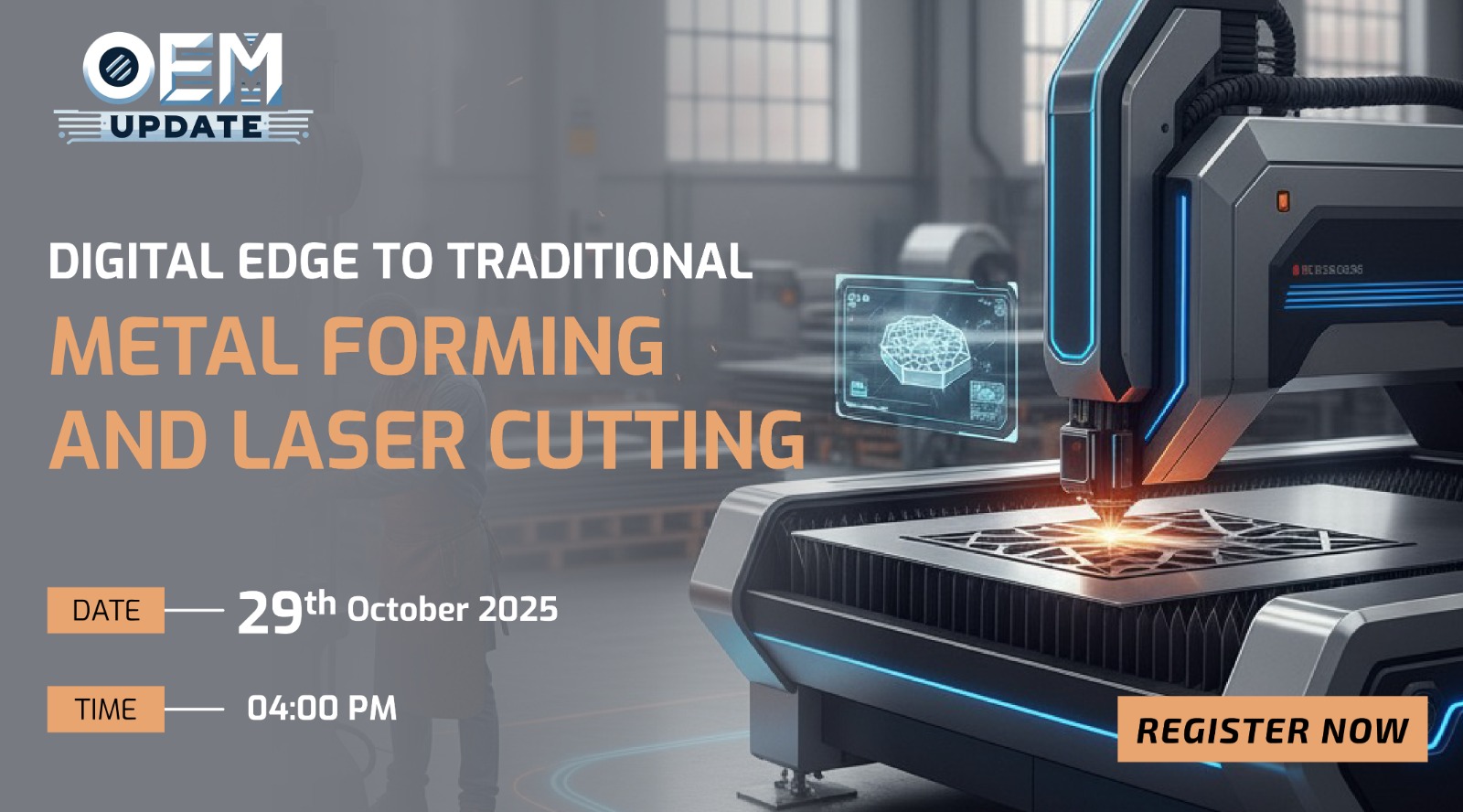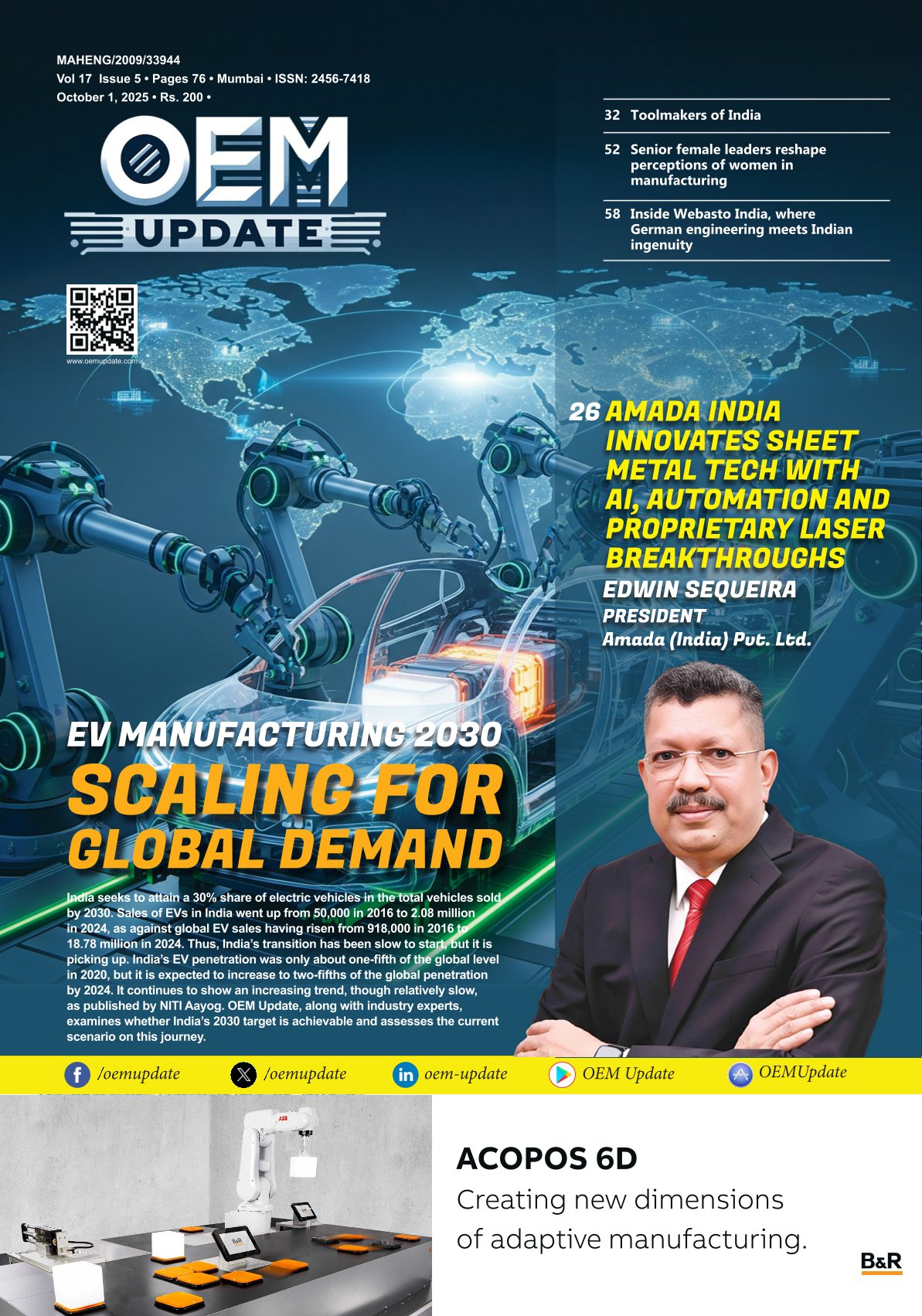Shot Peening – Air is the success mantra
By OEM Update Editorial July 17, 2017 12:07 pm IST
With technological improvements, today compressed air technology is much more competitive that maintains the highest possible quality characteristics.
Importance of shot peening to improve the fatigue life of metallic parts was recognised years back. Studies conducted by qualified organisations like NASA, Ford Motor Company, Fiat Research Centre, and several universities show that shot peening is an extremely effective treatment to enhance fatigue strength and thus lifespan of such parts, be it prosthetic component or an aerospace component or automotive component or a mould for light alloy die casting or even a weldment.
As the trend suggests, specific approach to specific sector was developed – air assisted (nozzle type) used by aerospace industry and airless (turbine) used by automotive industry. In past, nozzle assisted shot peening process was expensive due to high cost of air supply equipment and maintenance while airless shot peening was a low-cost process. Accordingly, the cost economics of nozzle type process for aerospace was perfectly compatible with level of risk associated. On the other hand, automotive parts were treated with airless process. Nonetheless the airless shot peening was not a controlled process and hence not devoid of risk of part failure leading to recall of components. Recall of parts involves huge economic cost, besides denting the brand.
Shot peening, is categorised as a “special process” that enhances the fatigue resistance of the metallic components. It must therefore, be a reliable process that offers repetitive results, job after job and batch after batch. This reliability can be achieved by designing a controlled shot peening process.
Controlled shot peening is a continuous evolvement and for a good outcome, theoretical principles together with field experience should be applied to treat each case individually.
Shot Peening – The phenomenon
The process
Controlled shot peening is a cold mechanical process wherein metal surface is “bombarded” with a controlled jet of micro-balls shot at high velocity. The impact of the balls that is few tenth of a millimetre deep, causes the component’s surface fibres permanent set. The external fibres, plasticised, tend to stretch while the internal ones tend to push them back to the original position. From the resulting balance, a residual compression remains on the surface thereby increasing the resistance to fatigue of the treated area.
Fatigue
Fatigue, estimated to be more than 85 per cent cause for component failure, is a mechanism of damage accumulation and propagation in a mechanical component subjected to variable stress over time. Even if the loads applied on surface of the component is substantially lower than the ultimate tensile stress or static yield point of the material, micro-cracks are generated at most stressed point. With continued fatigue stress, the cracks keep growing until the component fails completely. It is an extremely complex phenomenon not possible to describe in single formulation and difficult to assess during design. Fatigue manifests itself with an unexpected sudden failure and is therefore particularly insidious.
The benefits
With suitable treatments optimised through specific experimental plans, shot peening increases strength at least by 15-20 per cent and up to 70-80 per cent or even more. The process can be used to increase resistance in:
• All cases of fatigue caused by bending, twisting, tension, compression.
• Parts with strong coefficients of stress concentration.
• Cases of contact fatigue like pitting, fretting, and TIFF – tooth internal fatigue fracture.
• Stress corrosion cracking.
Besides, the micro-roughness of the surface generated during the treatments can help to resolve problems of lubrication and noise in the gears.
The systems
Shot peening systems are essentially automatic. The process is categorised as “special processes” that are not verifiable ex post. Therefore, to control the process, one should ensure that the operational settings constantly remain within strict tolerances throughout the treatment. The compressor should constantly provide the best possible quality of air. A system may be configured differently but would fundamentally have following technological modules:
• Cabin – A metal structure to suit job size and house part handling unit and nozzles.
• Handling unit – must essentially provides reciprocal movement to part w.r.t. nozzle.
• Elevator and tube – carries the balls and dust to cyclone.
• Separation cyclone – for separating dust and good balls.
• Sorter unit – a vibrating sieve to retain balls of good shape and size.
• Shooting system – pressurised tanks to feed nozzles and equipped with valves to adjust air pressure and ball flow rate.
• Controller – for correct management of all operational parameters, keeping them within expected range throughout the entire process.
The principle and the effects
When the ball impacts the surface of the workpiece, it produces a micro-imprint i.e. a dimple with a small surrounding edge. The imprint is resultant of two simultaneous events occurring with impact – Hertzian Pressure exerted on the sub-surface layer and cold flow. As per Hertz theory, maximum stress is at depth of dimple and magnitude is function of speed of impact. In addition, during impact there is also a cold flow that generates the imprint edge thus producing a virtual stretching of the surface fibres. The overlapping of the two contributions produces a profile of residual stress with a high surface compression and an eventual sub-surface spike that depend on the process conditions. The residual compression stress generated by the shot peening process is the main cause of the increase in resistance to fatigue of the parts peened.The technology
The technological history of controlled shot peening is relatively new and still evolving. The process is characterised by variety of operational parameters. However, with focus on standardisation these are summarised in three fundamental parameters, independent of operational systems. These are: Ball, Intensity, Coverage.
• The ball is “the tool” that introduces residual compression stress. Its shape must absolutely be round. Balls with sharp shapes are extremely dangerous as they can generate micro cuts in the surface with negative effects on the component’s fatigue strength. It is therefore fundamental that balls should only wear off and not break during the process.
• Intensity is a parameter that is measured through a “saturation curve” and represents the average kinetic energy of the ball stream.
• Coverage is expressed as a percentage relationship between the sum of the ball imprint areas and the area of the surface to be treated.
These three basic parameters are both control parameters and design parameters. Controlling the basic parameters guarantees perfect reproducibility and repeatability of the process. The correct choice of the parameter values guarantees achieving optimal performance of the components. To achieve the best performance, it is therefore necessary to work on two issues: the “design” of the controlled shot peening, and a strict control of the process.
Know-how and masking
To get the most out of the treatment, maximum attention must be paid to all phases of the process, and it is necessary to carefully define the areas of the component that need to be treated. Very often the surfaces of mechanical parts have special surface finishes as per functionality and application. It is therefore important to identify the surfaces needing treatment and protect functionally special surfaces by masking. Masking and clamping equipment is fundamentally important in achieving the proper results. It must permit access to the areas being treated, ensure correct protection during treatment and, above all, the protected surfaces must not be damaged when removing it. It calls for specific skills and expertise, truly a “profession within a profession.”
Design of treatment
Design is a multidisciplinary process involving metallurgy of the material to be treated, ability to define fatigue conditions, relative critical volumes and the specific skills regarding treatment technology. Today there are no analytical methods able to foresee with precision the performance of a component, given the treatment parameters. From the dimensions, shape, material, external loads to which the component is subjected, and through an opportune analysis of design and technological constraints, the key characteristics of a shot peening treatment optimised for the specific case are calculated. Even though digital simulations are increasingly refined, experimental research, the measurement of residual stress, and a capacity for analysis today remain fundamental elements for a high-level design.
Shot Peening – Air is the Success Mantra
With technological improvements, today compressed air technology is much more competitive that maintains the highest possible quality characteristics. The modern compressed air plants are equipped by high efficiency nozzles that significantly reduce noise emissions and energy costs. Nozzles now used have negligibly wear and costs of maintenance and consumables are significantly reduced. Furthermore, with the help of computer simulations, the set-up of a compressed air machine is incredibly simplified.
Besides designing a controlled process, acoustic compatibility with work environment is also a focus area. Using modern sound-absorbing materials, shot peening intensity as high as over 20 Almen A can be attained with very low noise emissions.
Norblast Srl, Italy – one stop solution for shot peening
Established in 1977, Norblast as manufacturer of compressed air shot blasting and shot peening equipment. Then the shot blasting process was applied for improving the surface finish rather than enhancing the fatigue life of mechanical parts.
Soon the fatigue resistance phenomenon was recognised and a research based peen service unit was established by Norblast Srl. With over 35 years of experience and having supplied over 6000 machines, Norblast Srl, Italy has worked in almost every variety of components for shot peening thus developed skills and capabilities to offer precise solution in shot peening of any kind of metallic components
Authored by _
Praveen Goyal, MachTools TechnoServe P Ltd with inputs from Stefano Norelli, Manager Sales at Norblast Srl Italy
For more information:
MachTools TechnoServe P Ltd
B 207 Okhla Industrial Area – I, New Delhi – 110020
Tele: +91-98106 15463 , Fax: +91-11-4104 3080
Email: Sales@MachTools.in
Cookie Consent
We use cookies to personalize your experience. By continuing to visit this website you agree to our Terms & Conditions, Privacy Policy and Cookie Policy.















